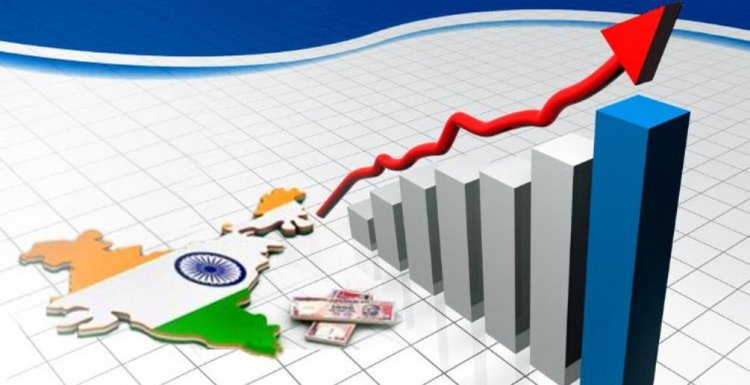Good Figures, But Uncertainty over the Medium Term

According to the second advance estimates released by the National Statistical Office, after two quarters of contraction, the Indian economy grew by 0.4 per cent in the third quarter of the current financial year.
Areas of concern
The agricultural sector grew by 3.9 per cent in the fourth quarter, and growth for the full year is expected to touch 3 per cent. This is the only sector, barring electricity, gas and water supply, to register positive growth for the full year. Within the industrial sector, both manufacturing and construction have witnessed growth.
But, the Indian Express writes “this is likely to have been driven by the larger firms, with the smaller ones continuing to struggle — indicative of the heavily lopsided nature of the recovery. Moreover, as the index of industrial production suggests, volume growth continues to remain muted. Within the services sector too, the pace of recovery remains uneven. While the financial, real estate and professional services segment has rebounded strongly, the labour intensive trade, hotels, transport and communication parts of the economy continue to contract. Though the pace of contraction has moderated, it is indicative of continuing challenges faced by contact intensive segments. Household spending remained constrained, notwithstanding the pick up during the festive season, reflective of job and income losses. Investment activity, though, appears to have fared better, despite subdued private activity. After contracting by 27.5 per cent in the first half of the year, investment activity is expected to rebound in the second half, growing by 2.7 per cent. The uptick appears to be driven by government spending — capital expenditure by the Centre more than doubled in the third quarter.”
Among the other areas of concern, are that these “numbers do not adequately reflect the stress in the informal economy — it is likely to have fared worse than the formal sector…..Two, an uptick in Covid-19 cases in the past few weeks in some parts of the country has raised fears of localised lockdowns impacting economic activity. Much will depend on how quickly the vaccination programme is rolled out. Three, one must also be cautious in interpreting the growth numbers in the coming quarters, especially the first half of next year, as they are likely to be distorted due to the base-effect. Beyond that, uncertainty persists over the medium term economic outlook.”
Reasons for a better performance in the second half of 2020-2021
Generally agreeing with the above assessment, Dharmakirti Joshi (Chief Economist, CRISIL Ltd) says one will need to wait for the May “provisional estimate”. Figures in India “could change in the final estimates as economic activity in the vast informal sector is hard to assess…….”
The emerging story of 2020-2021, he says, is essentially a year of two distinct halves. “The economy has moved up from a steep of 15.9 per cent contraction in the first half to flattish growth in the second half as per second advanced estimates. It’s important to understand why that happened to know what needs to be done.
First, the flattening of the Covid-19 curve in the second half has “led to a gradual lifting of restrictions, improving mobility and economic activity across-the-board, except in services.
“Two, overall, government consumption expenditure has risen, though only by around 2 per cent on-year….The nature of government spending — on roads, highways and metros — has benefited the labour-intensive construction segment……...Consequently, construction GDP growth is projected to rebound sharply from a contraction of 29.1 per cent to a growth of 7.4 per cent between the two halves.
“Three, manufacturing activity rebounded quickly once supply restrictions were lifted, logging 1.6 per cent on-year growth in the third quarter, with the momentum continuing into the fourth……..”
However, says Joshi “some of these drivers may not play out in fiscal 2022. Though interest rates are likely to remain supportive, there is an upward price pressure on durable goods due to a rise in input costs and commodity prices. Weakness in contact-based services will restrict demand for products from this segment. Steady growth will need a sustained lift in household incomes.”
Although in the next fiscal, the expectation is that GDP will grow at 11 per cent, “Yet, the pace will return to the pre-pandemic level only by the second quarter, and the full-fiscal real GDP will be barely 2 per cent higher than 2019-20, underscoring a permanent GDP loss of around 11 per cent.”
















